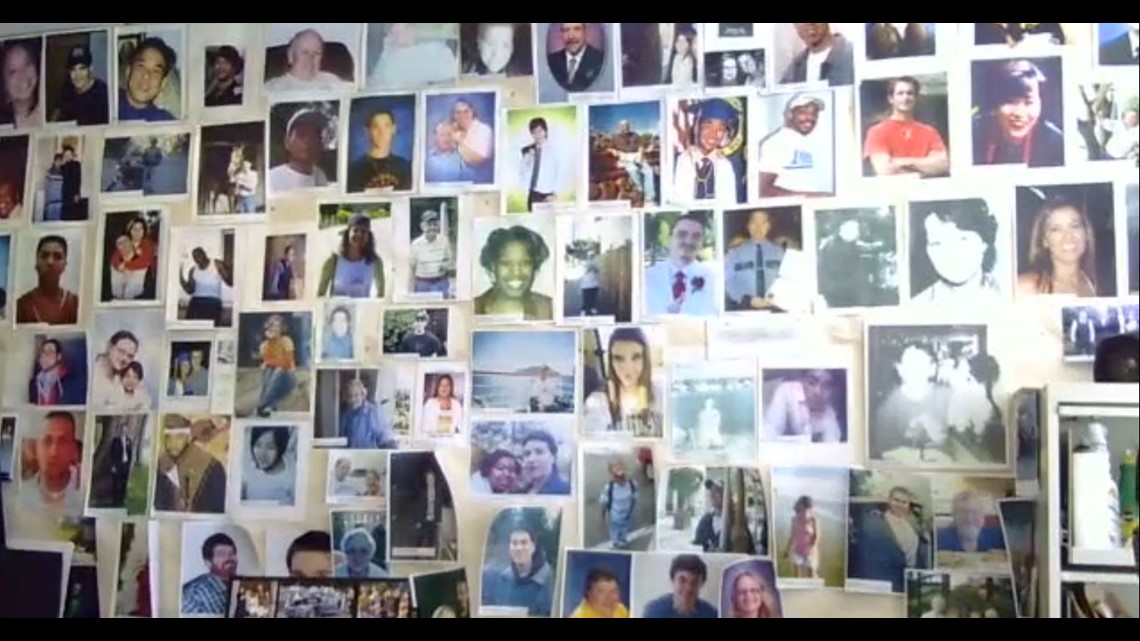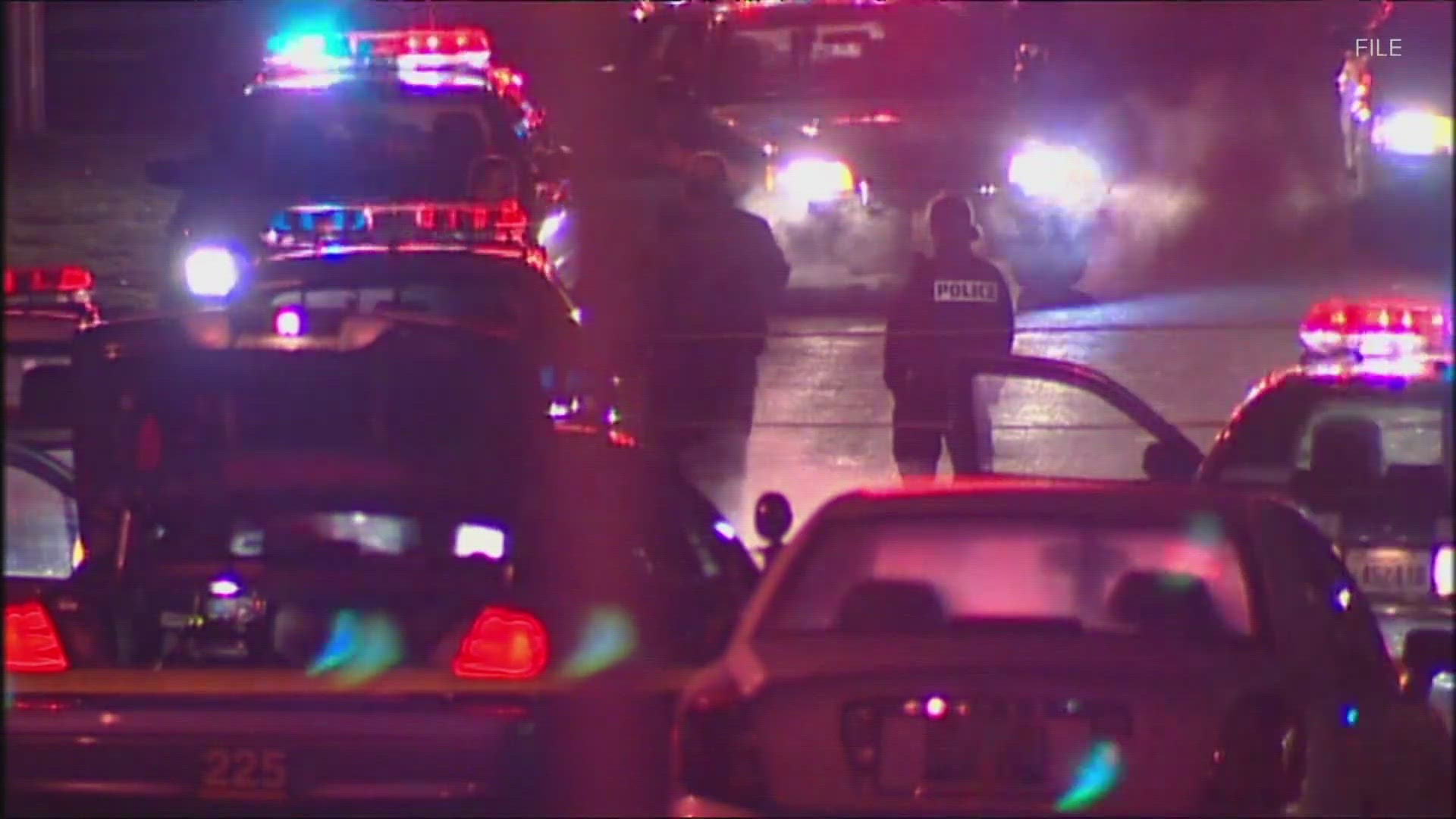SEATTLE — In Amy Freedheim’s office at the King County Courthouse in Seattle, dozens of pictures plaster her wall. People of all ages, races and backgrounds smile out at her as she works.
The pictures represent just a fraction of the victims in the vehicular homicide cases she has tried during her thirty years with the King County Prosecuting Attorney’s Office. When asked if the volume of photos is hard to look at, she says this:
“Defense attorneys will come in and they’ll say, ‘Oh my god, isn’t it oppressive?’ and ‘Doesn’t it make you sad?’ And I’m like, no,” Freedheim said. “I mean I want to remember the case from them… I want to remember my victims, and they give me the incentive to keep doing this.”


Seeking justice for victims of vehicular assaults and vehicular homicides is work that is never over – and in many ways, it’s ramping up.
Freedheim has been the sole prosecutor specializing in felony traffic crimes at KCPAO for the past 25 years. She is now the head of the office’s newly formed Felony Traffic Unit, meaning two deputy prosecutors are joining her in working through a backlog of cases.
King County Prosecuting Attorney Leesa Manion announced the formation of the new unit under Freedheim’s leadership in January, and it comes as traffic fatalities have been on the rise for the past several years – the result of an increase in a number of reckless behaviors that have manifested on the freeways.
“It’s really, really, scary, and if you drive on the roads, you know it, because people are much more aggressive around you,” Freedheim said.
Fatalities in King County have been increasing since 2018, but the most significant increases were seen in 2021, with 126 deaths (up from 107 in 2020,) and in 2022 with another significant leap: 146 fatalities.
Of those fatalities, impairment and speed-related fatal crashes have spiked the most dramatically.
King County reflects a statewide, and nationwide, trend. Shelly Baldwin, director of the Washington State Traffic Safety Commission said they haven’t seen such a dramatic increase in traffic fatalities since the ‘70s. Traffic deaths increased 39% statewide between 2019 and 2022, with similar spikes in speed and impairment-related crashes.
For researchers, the data has been disquieting. The fatality uptick came at a time when people were driving less than ever. Unprecedented numbers of people were working from home. For much of that time there were no restaurants, parties, or events to go to and widespread public messaging urged people to stay at home.
“It shocked us,” Baldwin said. “Everything up to this point has said… fatalities increase with more vehicle miles, more people, more cars on the freeway, which makes perfect sense. To see less and have an increase was not what decades of traffic research told us would happen.”
While the exact reasons why may be unknown for years to come, it’s not hard to guess what one catalyst might be.
“It certainly seems to be correlative to the pandemic,” Baldwin said. “I think we’ve seen pandemic impacts not just on our roads but across the board. We’ve seen increases in people who need treatment, we’ve seen increases in just addiction, hospital visits, homelessness across the board there’s been big increases, and I think those are also being seen on our roadways.”
Speed has also come into clear focus as a leading cause of fatal accidents – moreso than before.
“Speed for a long time has been a back burner issue, (people thought) like ‘Everybody speeds, we’re not going to do anything about it,’” Baldwin said.
During the early years of the pandemic, Freedheim said she and prosecutors nationwide were seeing more and more cases involving extreme speeds over 100 miles per hour.
“People were saying ‘Oh yeah, in our state, we had someone going 150 and 190,’ and we, we saw that here,” Freedheim said. “We’ve had people on I-5 who are stopped going 120, 150 miles per hour.”
And while life has returned to normal in many ways, 2022 data shows the increase in reckless driving behaviors persists. Freedheim said the extra help at the prosecutor’s office is needed.
“What we have seen over the years is that the number of cases has increased in complexity and also volume,” Freedheim said. “Since 2019 we’ve seen an unprecedented volume in these cases, and we just can’t have one person doing them.”
Trying a felony traffic case
Putting someone on trial for vehicular assault or vehicular homicide requires multiple skill sets outside the practice of law. Knowledge of toxicology is helpful in cases involving impairment, and familiarity with physics is necessary when it comes to accident collision reconstruction.
Freedheim said felony traffic cases are also different from trying other crimes because the perpetrators in these cases rarely have intent to cause harm, but in this line of work, that’s not enough to absolve them of responsibility.
“The person getting behind the wheel of a car and driving in a really selfish, irresponsible way, whether they are impaired, whether they are reckless, does not intend to cause the damage, they don’t intend to assault somebody, they don’t intend to injure, they don’t intend to kill somebody,” Freedheim said. “But their behavior is so selfish, so irresponsible and so reckless that we look at that behavior and we say, ‘That is not ok, you have broken a public trust.’”
Most often, it’s clear who the at-fault driver is, Freedheim said. The difficulty sometimes lies in proving a driver was behaving in a manner they knew or should have known was unsafe.
“It’s more often a matter of, can we show that you were driving in a reckless manner, were you driving rash and heedless and indifferent to the consequences? What is happening in your car?” Freedheim said.
Even in accidents where someone is negligent, that doesn’t automatically make it a felony crime.
“For a felony, we have to show that there’s some conscious disregard for safety going on, and sometimes that’s difficult to prove,” Freedheim said.
It can be challenging to prove if someone was using their phone at the time of an accident. In other situations, signs of impairment may escape witnesses and investigators if they aren’t as obvious as the smell of marijuana or alcohol. Other drugs may not have an odor and may cause people to behave in ways that aren’t typical of more recognized forms of impairment.
“People might see and make observations about a person which a trained officer or a trained medical person would recognize are signs consistent with impairment, but an untrained person won’t necessarily realize that’s even impairment, so sometimes people who are high on drugs, it slips through, they don’t realize it,” Freedheim said.
Preventing future traffic fatalities
A couple weeks ago, Freedheim arraigned a man who drove the wrong way on the West Seattle Bridge, striking and killing two high school seniors. In the courtroom, the mother of one of the victims said her daughter was supposed to have graduated the day before. Instead of celebrating her child, she just stayed home.
“It’s just so unnecessary, the heartbreak that I see and that I’ve seen over the years,” Freedheim said.
Meantime, she’s preparing to file what will be another man’s fourth felony DUI charge. In order to be charged with the first felony DUI, that means someone has had four or more DUI convictions in the past ten years.
While people whose case files arrive on Freedheim’s desk have already allegedly committed a crime, she also believes prosecution plays an important role in preventing future offenses. Part of that work means grappling with the way addiction and substance abuse contributes to reckless driving.
“Well part of (our job) is, to as swiftly as possible to prosecute people, because we find that people who are more swiftly prosecuted… can get into, if we can focus them, into getting treatment,” Freedheim said.
Freedheim cited a study out of California that concluded a majority of first-time DUI offenders that are convicted and spend time in jail won’t go on to re-offend.
“Most people are shamed, and they won’t do it again,” Freedheim said. “So, we’re really talking about the repeat offenders, and what can we do to address the repeat offenders.”
Community custody, which is an alternative to jail that aims to change offender behaviors, is also available to people who have been convicted of a DUI thanks to prompting by state prosecutors and action by the legislature.
“We’re not punishing people for being addicted, we’re punishing people who are getting behind the wheel of a car,” Freedheim said. “That is the problem, is that these are a subsection of addicts… because they are getting behind the wheel and the damage they cause is so unnecessary.”
Recent efforts have also been focused at the state level on addressing reckless speeding. There is pressure from Gov. Jay Inslee and the Washington State Traffic Safety Commission to broaden the use of speed cameras – a technology that has already been approved for use in work zones on freeways and has proven effective at curbing speeding in other countries.
And now, with the formation of the felony traffic unit, Freedheim will be able to train new deputy prosecutors in trying these types of cases and also provide more training to police on what to look for when investigating these crimes.
“I do think that as a prosecutor, or else I wouldn’t be doing this for my career, that we do have a sense of trying to do justice for the community,” Freedheim said. “Obviously for an individual case we are hopefully helping a victim deal with one aspect of what is a terrible loss or challenge, but overall it is to do justice for the community, and to try to help a community understand how to work together in our social contract that we live in that has become so fragile.”

